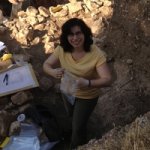Zambelis Spyros
Παλαιό Μέλος
(2012) Η νεοελληνική πολιτισμική φυσιογνωμία μέσα από το ρόλο της μουσικής σε αναβιώσεις του αρχαίου δράματος, Gutenberg - Γιώργος & Κώστας Δαρδανός
''Στο παρόν πόνημα αναπτύσσονται ζητήματα σχετικά με τις αναβιώσεις αρχαίων δραμάτων στη νεότερη Ελλάδα, στο βαθμό που αυτές συνέβαλαν, προάγοντας την αρχαία ελληνική κληρονομιά, στην παραγωγή εθνικής ιδεολογίας. Η μελέτη επικεντρώνεται στην "αποκωδικοποίηση" των σχέσεων αρχαιότητας και νεότερης Ελλάδας μέσα από το ρόλο της μουσικής στις αναβιώσεις αυτές.
Τα χαρακτηριστικά που αναλύονται, κατά συνέπεια, απαντούν σε ερωτήματα που ακολουθούν και αναδεικνύουν τις ιδιαιτερότητες του νεοελληνικού πολιτισμού: ποιος είναι ο ρόλος της παράδοσης και ποια είναι η θέση της μουσικής στο δίπολο Ανατολή-Δύση που χαρακτηρίζει γενικότερα τη νεοελληνική ιστορία, ποια είναι ιεραρχικά η θέση της μουσικής σε σχέση με το λόγο και τη σκηνοθεσία στο ολικό έργο τέχνης του αρχαίου δράματος, με ποιους τρόπους η μουσική μπορεί να αναδείξει την υπεροχή της στο αρχαίο δράμα ως όπερα και, τέλος, σε ποιο βαθμό αυτά τα χαρακτηριστικά βρίσκονται σε σύμπνοια ή αντιπαράθεση με τις αντίστοιχες εξελίξεις στην υπόλοιπη Ευρώπη με την οποία η Ελλάδα συνδιαλέγεται και αλληλεπιδρά.
Η συστηματική ενασχόληση με τα θέματα αυτά και ο εποικοδομητικός διάλογος που θα προκύψει αναδεικνύουν μια σημαντική πτυχή της πρόσληψης της αρχαιότητας στη νεότερη Ελλάδα. Μια ιδιαίτερα σημαντική πολιτισμική πτυχή της χώρας μας που αδικαιολόγητα απουσιάζει από τον ευρύτερο επιστημονικό διάλογο.''
H Aναστασία Α. Σιώψη είναι Επίκουρη Καθηγήτρια στο Τμήμα Μουσικών Σπουδών του Ιονίου Πανεπιστημίου με ειδικότητα "Αισθητική της Μουσικής". Οι κύριες ερευνητικές δραστηριότητές της περιλαμβάνουν ανακοινώσεις και διαλέξεις σε διεθνή μουσικολογικά συνέδρια, καθώς και δημοσιεύσεις και συνεισφορές σε συλλογικούς τόμους σε διεθνή μουσικολογικά περιοδικά και εκδόσεις στην Ελλάδα και το εξωτερικό, κυρίως για τη γερμανική ρομαντική μουσική, ιδιαίτερα τα μουσικά δράματα του Ρίχαρντ Βάγκνερ (η διδακτορική της διατριβή έχει τίτλο "Richard Wagner' s "Der Ring des Nibelungen": The Reforging of the Sword or, Towards a Reconstruction of the People's" Consciousness, Αγγλία 1996), όπως επίσης και για τη νεοελληνική λόγια μουσική, ιδιαίτερα το έργο του Μανώλη Καλομοίρη και ζητήματα αισθητικά και ιδεολογικά της εποχής της Εθνικής Μουσικής Σχολής, τις Ελληνίδες συνθέτριες, καθώς και για τη μουσική σε μορφές αναβίωσης του αρχαίου ελληνικού δράματος στη νεότερη Ελλάδα. Κεφάλαια σε συλλογικούς τόμους περιλαμβάνουν ενδεικτικά τη μελέτη "Dreaming the myth of "wholeness": Romantic interpretations of Ancient Greek Music in Greece (c.1890-1914)" (υπό έκδ. στο Textual Intersections: Literature and the Arts in Nineteenth Century Europe, Ιnternationale Forschungen zur Allgemeinen und Vergleichenden Literaturwissenschaft series, Editions Rodopi) και τη μελέτη "Greek women contributing in art music in Greece and abroad" (υπό έκδ. στο Her Art: A Diachronic Perspective of Greek and Greek-American Women in Literature, Music and the Visual Arts, New York, Cosmos Publishing House). Επίσης, η μονογραφία της "Τρία δοκίμια για τον Μανώλη Καλομοίρη" έχει εκδοθεί στη σειρά "Ελληνικές Μουσικολογικές Εκδόσεις", την οποία επιμελείται ο μουσικολόγος και καθηγητής Απόστολος Κώστιος (Αθήνα: Μουσικός Εκδοτικός Οίκος Παπαγρηγορίου-Νάκας, 2003).
http://www.biblionet.gr/book/185888...ς_μουσικής_σε_αναβιώσεις_του_αρχαίου_δράματος
''Στο παρόν πόνημα αναπτύσσονται ζητήματα σχετικά με τις αναβιώσεις αρχαίων δραμάτων στη νεότερη Ελλάδα, στο βαθμό που αυτές συνέβαλαν, προάγοντας την αρχαία ελληνική κληρονομιά, στην παραγωγή εθνικής ιδεολογίας. Η μελέτη επικεντρώνεται στην "αποκωδικοποίηση" των σχέσεων αρχαιότητας και νεότερης Ελλάδας μέσα από το ρόλο της μουσικής στις αναβιώσεις αυτές.
Τα χαρακτηριστικά που αναλύονται, κατά συνέπεια, απαντούν σε ερωτήματα που ακολουθούν και αναδεικνύουν τις ιδιαιτερότητες του νεοελληνικού πολιτισμού: ποιος είναι ο ρόλος της παράδοσης και ποια είναι η θέση της μουσικής στο δίπολο Ανατολή-Δύση που χαρακτηρίζει γενικότερα τη νεοελληνική ιστορία, ποια είναι ιεραρχικά η θέση της μουσικής σε σχέση με το λόγο και τη σκηνοθεσία στο ολικό έργο τέχνης του αρχαίου δράματος, με ποιους τρόπους η μουσική μπορεί να αναδείξει την υπεροχή της στο αρχαίο δράμα ως όπερα και, τέλος, σε ποιο βαθμό αυτά τα χαρακτηριστικά βρίσκονται σε σύμπνοια ή αντιπαράθεση με τις αντίστοιχες εξελίξεις στην υπόλοιπη Ευρώπη με την οποία η Ελλάδα συνδιαλέγεται και αλληλεπιδρά.
Η συστηματική ενασχόληση με τα θέματα αυτά και ο εποικοδομητικός διάλογος που θα προκύψει αναδεικνύουν μια σημαντική πτυχή της πρόσληψης της αρχαιότητας στη νεότερη Ελλάδα. Μια ιδιαίτερα σημαντική πολιτισμική πτυχή της χώρας μας που αδικαιολόγητα απουσιάζει από τον ευρύτερο επιστημονικό διάλογο.''
H Aναστασία Α. Σιώψη είναι Επίκουρη Καθηγήτρια στο Τμήμα Μουσικών Σπουδών του Ιονίου Πανεπιστημίου με ειδικότητα "Αισθητική της Μουσικής". Οι κύριες ερευνητικές δραστηριότητές της περιλαμβάνουν ανακοινώσεις και διαλέξεις σε διεθνή μουσικολογικά συνέδρια, καθώς και δημοσιεύσεις και συνεισφορές σε συλλογικούς τόμους σε διεθνή μουσικολογικά περιοδικά και εκδόσεις στην Ελλάδα και το εξωτερικό, κυρίως για τη γερμανική ρομαντική μουσική, ιδιαίτερα τα μουσικά δράματα του Ρίχαρντ Βάγκνερ (η διδακτορική της διατριβή έχει τίτλο "Richard Wagner' s "Der Ring des Nibelungen": The Reforging of the Sword or, Towards a Reconstruction of the People's" Consciousness, Αγγλία 1996), όπως επίσης και για τη νεοελληνική λόγια μουσική, ιδιαίτερα το έργο του Μανώλη Καλομοίρη και ζητήματα αισθητικά και ιδεολογικά της εποχής της Εθνικής Μουσικής Σχολής, τις Ελληνίδες συνθέτριες, καθώς και για τη μουσική σε μορφές αναβίωσης του αρχαίου ελληνικού δράματος στη νεότερη Ελλάδα. Κεφάλαια σε συλλογικούς τόμους περιλαμβάνουν ενδεικτικά τη μελέτη "Dreaming the myth of "wholeness": Romantic interpretations of Ancient Greek Music in Greece (c.1890-1914)" (υπό έκδ. στο Textual Intersections: Literature and the Arts in Nineteenth Century Europe, Ιnternationale Forschungen zur Allgemeinen und Vergleichenden Literaturwissenschaft series, Editions Rodopi) και τη μελέτη "Greek women contributing in art music in Greece and abroad" (υπό έκδ. στο Her Art: A Diachronic Perspective of Greek and Greek-American Women in Literature, Music and the Visual Arts, New York, Cosmos Publishing House). Επίσης, η μονογραφία της "Τρία δοκίμια για τον Μανώλη Καλομοίρη" έχει εκδοθεί στη σειρά "Ελληνικές Μουσικολογικές Εκδόσεις", την οποία επιμελείται ο μουσικολόγος και καθηγητής Απόστολος Κώστιος (Αθήνα: Μουσικός Εκδοτικός Οίκος Παπαγρηγορίου-Νάκας, 2003).
http://www.biblionet.gr/book/185888...ς_μουσικής_σε_αναβιώσεις_του_αρχαίου_δράματος












